Milwaukee M12 2455-22 Handleiding
Milwaukee
Schroefmachine
M12 2455-22
Bekijk gratis de handleiding van Milwaukee M12 2455-22 (9 pagina’s), behorend tot de categorie Schroefmachine. Deze gids werd als nuttig beoordeeld door 36 mensen en kreeg gemiddeld 3.6 sterren uit 18.5 reviews. Heb je een vraag over Milwaukee M12 2455-22 of wil je andere gebruikers van dit product iets vragen? Stel een vraag
Pagina 1/9

Cat. No. / No de cat.
2455-20
M12™ CORDLESS NO-HUB COUPLING DRILL DRIVER
PERCEUSE/TOURNEVIS À ACCOUPLEMENT SANS MOYEU
M12™
TALADRO-DESTORNILLADOR SIN CUBO DE
ACOPLAMIENTO DE M12™
OPERATOR'S MANUAL
MANUEL de L'UTILISATEUR
MANUAL del OPERADOR
WARNING To reduce the risk of injury, user must read and understand operator's manual.
AVERTISSEMENT An de réduire le risque de blessures, l'utilisateur doit lire et bien
comprendre le manuel.
ADVERTENCIA Para reducir el riesgo de lesiones, el usuario debe leer y entender el manual.
WARNING To reduce the risk of injury, user must read and understand operator's manual.
AVERTISSEMENT An de réduire le risque de blessures, l'utilisateur doit lire et bien
comprendre le manuel.
ADVERTENCIA Para reducir el riesgo de lesiones, el usuario debe leer y entender el manual.

2
GENERAL POWER TOOL
SAFETY WARNINGS
WARNING
Read all safety warnings, instruc-
tions, illustrations and specica-
tions provided with this power tool. Failure to
follow all instructions listed below may result in
electric shock, re and/or serious injury. Save all
warnings and instructions for future reference.
The term "power tool" in the warnings refers to your
mains-operated (corded) power tool or battery-oper-
ated (cordless) power tool.
WORK AREA SAFETY
• Keep work area clean and well lit. Cluttered or
dark areas invite accidents.
• Do not operate power tools in explosive atmo-
spheres, such as in the presence of ammable
liquids, gases or dust. Power tools create sparks
which may ignite the dust or fumes.
• Keep children and bystanders away while operat-
ing a power tool. Distractions can cause you to lose
control.
ELECTRICAL SAFETY
• Power tool plugs must match the outlet. Never
modify the plug in any way. Do not use any
adapter plugs with earthed (grounded) power
tools. Unmodied plugs and matching outlets will
reduce risk of electric shock.
• Avoid body contact with earthed or grounded
surfaces, such as pipes, radiators, ranges and
refrigerators. There is an increased risk of electric
shock if your body is earthed or grounded.
• Do not expose power tools to rain or wet condi-
tions. Water entering a power tool will increase the
risk of electric shock.
• Do not abuse the cord. Never use the cord for
carrying, pulling or unplugging the power tool.
Keep cord away from heat, oil, sharp edges or
moving parts. Damaged or entangled cords increase
the risk of electric shock.
• When operating a power tool outdoors, use an
extension cord suitable for outdoor use. Use of
a cord suitable for outdoor use reduces the risk of
electric shock.
• If operating a power tool in a damp location is
unavoidable, use a ground fault circuit interrupter
(GFCI) protected supply. Use of an GFCI reduces
the risk of electric shock.
PERSONAL SAFETY
• Stay alert, watch what you are doing and use
common sense when operating a power tool. Do
not use a power tool while you are tired or under
the inuence of drugs, alcohol or medication. A
moment of inattention while operating power tools
may result in serious personal injury.
• Use personal protective equipment. Always
wear eye protection. Protective equipment such
as a dust mask, non-skid safety shoes, hard hat or
hearing protection used for appropriate conditions
will reduce personal injuries.
• Prevent unintentional starting. Ensure the switch
is in the o-position before connecting to power
source and/or battery pack, picking up or carrying
the tool. Carrying power tools with your nger on
the switch or energizing power tools that have the
switch on invites accidents.
• Remove any adjusting key or wrench before
turning the power tool on. A wrench or a key left
attached to a rotating part of the power tool may
result in personal injury.
• Do not overreach. Keep proper footing and
balance at all times. This enables better control
of the power tool in unexpected situations.
• Dress properly. Do not wear loose clothing or
jewelry. Keep your hair and clothing away from
moving parts. Loose clothes, jewelry or long hair
can be caught in moving parts.
• If devices are provided for the connection of
dust extraction and collection facilities, ensure
these are connected and properly used. Use of
dust collection can reduce dust-related hazards.
• Do not let familiarity gained from frequent use
of tools allow you to become complacent and
ignore tool safety principles. A careless action can
cause severe injury within a fraction of a second.
POWER TOOL USE AND CARE
• Do not force the power tool. Use the correct power
tool for your application. The correct power tool
will do the job better and safer at the rate for which
it was designed.
• Do not use the power tool if the switch does not
turn it on and o. Any power tool that cannot be
controlled with the switch is dangerous and must be
repaired.
• Disconnect the plug from the power source and/
or remove the battery pack, if detachable, from
the power tool before making any adjustments,
changing accessories, or storing power tools.
Such preventive safety measures reduce the risk of
starting the power tool accidentally.
• Store idle power tools out of the reach of children
and do not allow persons unfamiliar with the
power tool or these instructions to operate the
power tool. Power tools are dangerous in the hands
of untrained users.
• Maintain power tools and accessories. Check
for misalignment or binding of moving parts,
breakage of parts and any other condition that
may aect the power tool’s operation. If damaged,
have the power tool repaired before use. Many
accidents are caused by poorly maintained power
tools.
• Keep cutting tools sharp and clean. Properly
maintained cutting tools with sharp cutting edges
are less likely to bind and are easier to control.
• Use the power tool, accessories and tool bits
etc. in accordance with these instructions,
taking into account the working conditions and
the work to be performed. Use of the power tool
for operations dierent from those intended could
result in a hazardous situation.
• Keep handles and grasping surfaces dry, clean
and free from oil and grease. Slippery handles and
grasping surfaces do not allow for safe handling and
control of the tool in unexpected situations.
BATTERY TOOL USE AND CARE
• Recharge only with the charger specied by the
manufacturer. A charger that is suitable for one type
of battery pack may create a risk of re when used
with another battery pack.
• Use power tools only with specically designated
battery packs. Use of any other battery packs may
create a risk of injury and re.

4
2. To vary the speed, increase or decrease the pres-
sure on the trigger. The further the trigger is pulled,
the greater the speed.
3. the tool, release the trigger. Ensure the To stop
tool has come to a complete stop before laying
the tool down.
Installing Bits and Sockets
Always remove the battery before inserting or remov-
ing accessories. Select the proper style and size
accessories for the job. This driver is intended for
use with drill and driver bits with a 1/4" hex shank
and ball detent recess.
1. To install the accessory, pull out the collar and
insert the accessory. Release the collar.
2. To remove the accessory, pull out the collar and
remove the accessory.
Setting the Mode
The mode selector collar can be set to
60
Tightening
80
Tightening
80
Drilling
60 in. lbs, 80 in. lbs, or Drill. When
properly adjusted, the clutch will slip at
the set torque to prevent over-tighten-
ing and possibly damaging the bands.
To tighten bands, turn the mode selec-
tor collar so the arrow lines up with
either 60 or 80, as indicated by the
band manufacterer.
To drill, turn the mode selector collar
so the arrow lines up with .
Torque LED
When the specied torque is reached (60/80 in.lbs),
the Torque LED on the back of the tool will light.
Calibration
To maintain high-precision torque, the tool will occa-
sionally need to be checked for calibration. To signify
that the tool may be out of an acceptable tolerance
torque range, the Torque LED will ash after the trig-
ger is released. The tool can continue to be used for
jobs not requiring accurate torque, but should be re-
turned to a MILWAUKEE service facility before using
for precision torque work. Call 1-800-SAWDUST for
a service facility near you. MILWAUKEE will return to
you a fully calibrated tool, along with a manufacturer's
Certicate of Compliance.
Battery Pack Protection
To protect the battery from damage and extend its
life, the tool’s intelligent circuit monitors current draw,
temperature, and voltage drops.
In extremely high torque, binding, stalling, and short
circuit situations that cause high current draw, the
fuel gauge will ash, and the tool will turn OFF. To
reset, release the trigger.
Under extreme circumstances, the internal tem-
perature of the battery could become too high. If this
happens, the fuel gauge will ash and the battery
pack will shut o. Let the battery pack cool and then
continue work.
This tool provides a quick, convenient means of drill-
ing small holes and installing and removing bands.
ASSEMBLY
WARNING
Recharge only with the charger
specied for the battery. For spe-
cic charging instructions, read the operator’s
manual supplied with your charger and battery.
Removing/Inserting the Battery
To remove the battery, push in the release buttons
and pull the battery pack away from the tool.
WARNING
Always lock the trigger or remove
the battery pack any time the tool
is not in use.
To insert the battery, slide the pack into the body
of the tool. Make sure it latches securely into place.
OPERATION
WARNING
To reduce the risk of injury, always
wear proper eye protection marked
to comply with ANSI Z87.1.
When working in dusty situations, wear appro-
priate respiratory protection or use an OSHA
compliant dust extraction solution.
Always remove battery pack before changing
or removing accessories. Only use accessories
specically recommended for this tool. Others
may be hazardous.
Fuel Gauge
To determine the amount of charge left in the battery,
turn the tool ON. The Fuel Gauge will light up for 2-3
seconds. When less than 10% of charge is left, 1 light
on the fuel gauge will ash 4 times.
To signal the end of charge, 1 light on the fuel gauge
will ash 8 times and the tool will not run. Charge
the battery pack.
If the battery becomes too hot, the fuel gauge lights
will ash and the tool will not run. Allow the battery
to cool down.
Using the Control Switch
The control switch may be set to three positions:
forward, reverse and lock. Always allow the motor
to come to a complete stop before using the control
switch to avoid damage to the tool.
LOCK
Push to CENTER
ReverseForward
1. For forward (clockwise) rotation, push in the con-
trol switch from the right side of the tool. Check
the direction of rotation before use.
2. For reverse (counterclockwise) rotation, push in
the control switch from the left side of the tool.
Check direction of rotation before use.
3. To lock the trigger, push the control switch to the
center position. The trigger will not work while
the control switch is in the center locked position.
Always lock the trigger or remove the battery pack
any time the tool is not in use.
Starting, Stopping and Controlling Speed
1. the tool, grasp the handle(s) rmly and To start
pull the trigger.
NOTE: An LED is turned on when the trigger is
pulled and will go o shortly after the trigger is
released.
Product specificaties
| Merk: | Milwaukee |
| Categorie: | Schroefmachine |
| Model: | M12 2455-22 |
Heb je hulp nodig?
Als je hulp nodig hebt met Milwaukee M12 2455-22 stel dan hieronder een vraag en andere gebruikers zullen je antwoorden
Handleiding Schroefmachine Milwaukee
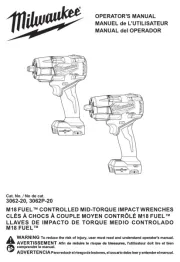
19 Augustus 2025
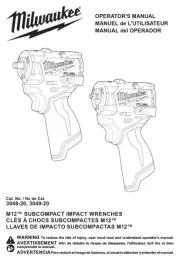
18 Augustus 2025
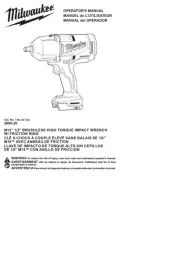
18 Augustus 2025
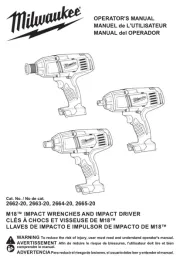
18 Augustus 2025
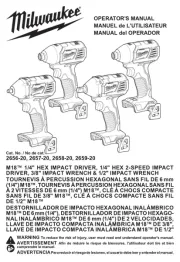
18 Augustus 2025
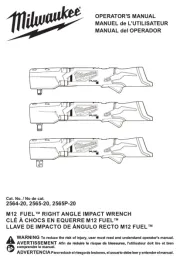
18 Augustus 2025
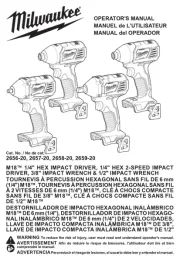
18 Augustus 2025
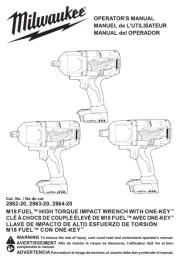
18 Augustus 2025
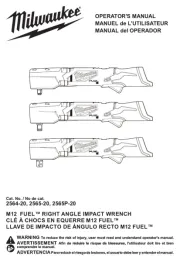
18 Augustus 2025
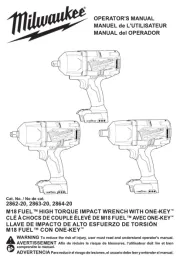
18 Augustus 2025
Handleiding Schroefmachine
- Fein
- Omega
- Vonroc
- Ferm
- Fieldmann
- Pansam
- Biltema
- Black Decker
- Hikoki
- Eibenstock
- Ingersoll Rand
- Ozito
- Proviel
- TAURUS Titanium
- Truper
Nieuwste handleidingen voor Schroefmachine
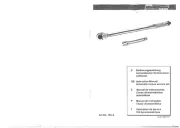
8 September 2025
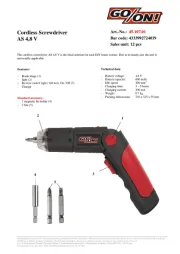
7 September 2025
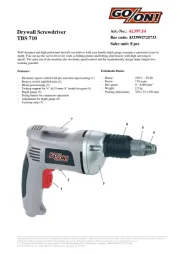
7 September 2025
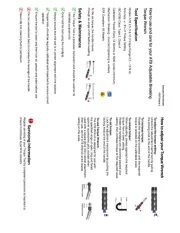
2 September 2025
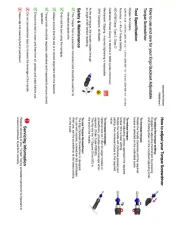
2 September 2025
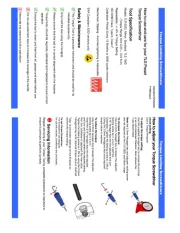
2 September 2025
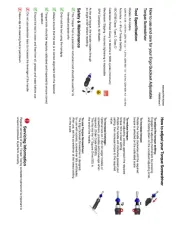
2 September 2025
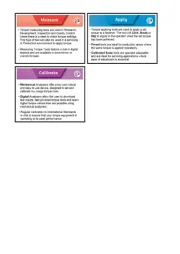
2 September 2025
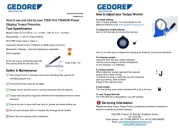
1 September 2025
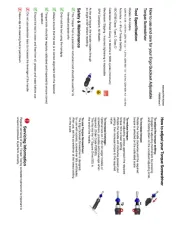
1 September 2025